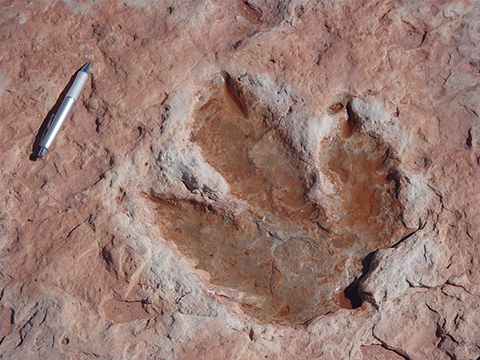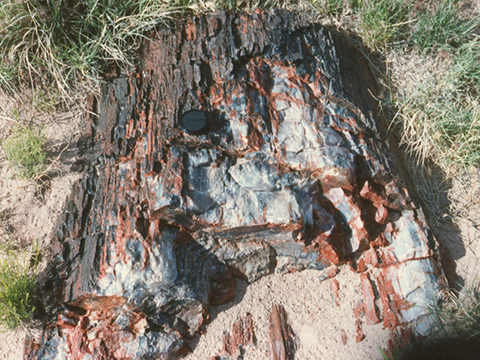Prelude
The study of fossils typically appeals to our imagination, as they represent life that existed at some time in the past. Fossils occur in many forms, such as a completely mineralized replacement of the original organism or as only a trace (see Figure 6-1). Although most rocks contain little or no recognizable fossil content, some sedimentary rocks provide a significant abundance of fossils. Sedimentary rocks are common across the Southwest, and many of them are fossiliferous. These include units like the Mississippian Redwall Limestone and Jurassic Morrison Formation. Using the fossils contained in these rocks, their ages can be determined. Fossil dating is especially powerful when combined with various relative and isotopic dating methods of other correlated rock types.
|
Figure 6-1. Ancient life of Arizona. A trace fossil footprint of the bipedal dinosaur Dilophosaurus in the Moenave Formation near Tuba City (left). One of the Chinle Formation's countless Araucaryoxylon arizonicum logs exposed in the Petrified Forest National Monument (right). Remember to click on the highlighted images to see larger versions. |
|
What Will You Do Today?
A. Life As We Know It - Review the taxonomy of Domain Eukarya
B. What Are Fossils? - Learn about the main types of fossils and preservation processes
C. Identifying Invertebrate Fossils - Identify different types of invertebrate critters
D. Fossil Dating - Use fossils to determine the age of rock units


